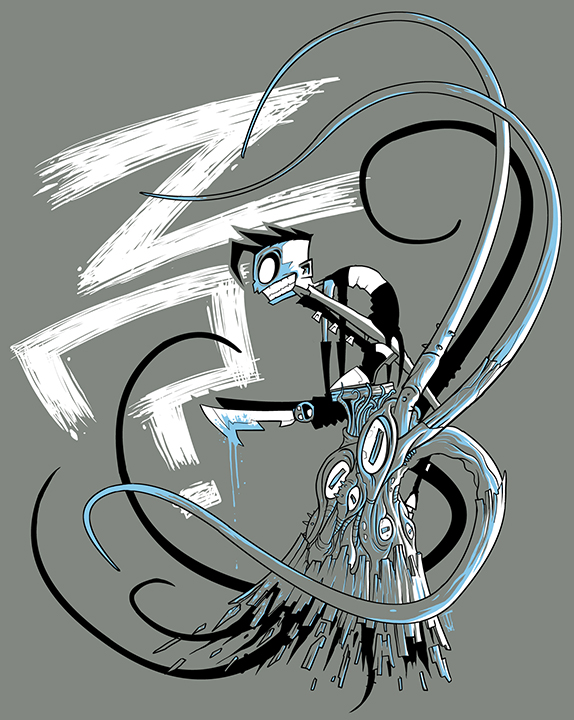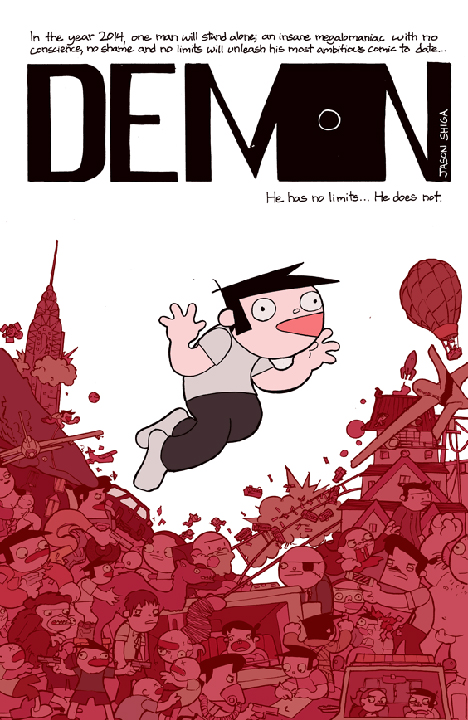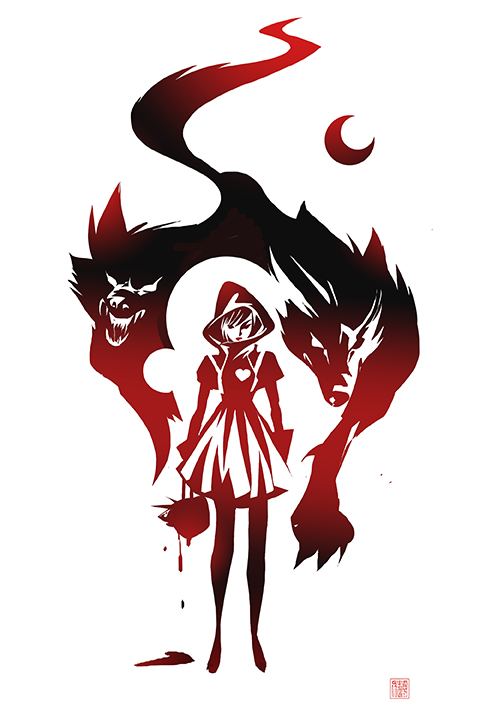In 1994, Dan Vado, owner of the comics and graphic novel publishing house Slave Labor Graphics, set out to do something heroic for the little guy. He founded the Alternative Press Expo (APE) in San Jose, a comic art fair connecting the indie publishers of comics, graphic novels and zines with the people who appreciate them.
“I wanted to send a message that just because you may be a small publisher without a lot of funding doesn’t mean you aren’t serious about your business,” says Vado.
During that pre-internet time, self-produced comics were rarely seen at the large-scale comics conventions that came with hefty exhibitors fees. Vado wanted to provided a different kind of platform for these artist storytellers; he envisioned a fair without curatorial limitations .

Immediately after APE began, Vado realized the expo would require financial support to grow. Vado’s personal funds were already allocated towards his own publishing company, so he amicably handed the event (and corresponding financial liability) over to Comic-Con.
Vado continued to help produce the expo for the next four years, until Comic-Con moved it to San Francisco. Fifteen years of successful growth later, when given the opportunity to “take APE back,” Vado agreed to grab the reins once more.
This weekend, APE returns to the South Bay, where Vado hopes to make the event self-sustainable and increasingly relevant for the digital age.
“APE has an opportunity to be a bigger deal here in San Jose than it ever was in San Francisco because there’s so much happening all at once up there and it’s too expensive,” says Vado. “APE coming to San Jose is almost a parable for what’s going on in San Francisco with the artists being pushed out.”

The question now is: What is APE an alternative to?
Vado is quick to respond: “Perhaps it’s an alternative to insincerity. I like to think that everyone that’s there is committed to their work on a personal level, regardless of where it’s coming from or if they’re being published by someone bigger… If you’re into working with us, we’re here to back you.”
His philosophy pays off. Over 250 vendors have booked space at the expo, making this year’s event a full house.
Vado has already made some subtle but significant changes to the event. Each vendor will have a 10 by 10-foot booth rather than the typical 6-foot table, allowing them to be more creative with the space.
For the first time ever, educators, librarians and retailers can sign up for free entry and attend professional development workshops on how comics and graphic novels can be utilized in the classroom. Vado also set up panel discussions at local businesses outside the San Jose Convention Center so people can explore local arts and culture.

APE’s continued existence may be due in part to our craving for the tangible in a digital age. A web comic scrolling across a screen doesn’t provide the same satisfaction as a cliffhanger at the bottom of a page — and the split second of anticipation you experience as you turn that page to find out what happens next.
APE also allows people to get together in real spaces around shared interests. Watching an artist talk at you on YouTube is far less memorable than speaking with an artist in person about their story inspirations while they autograph your book.
Vado aims for APE to be a platform for people who want a physical representation of their work, and an immersive experience for the audience. “When you put people in a group environment, you put civility back into the experience. You put thought and discourse into what you’re going to say because it has immediate consequences,” Vado says.
So long as comics provide the reassurances and hope so often lacking in the real world, the need for APE will continue. “In comics there’s still a sense of fairness and a sense of good versus evil,” he says. “If you live by a certain code and ethics, the good guy wins.” APE will supply plenty of that and more in San Jose this weekend.